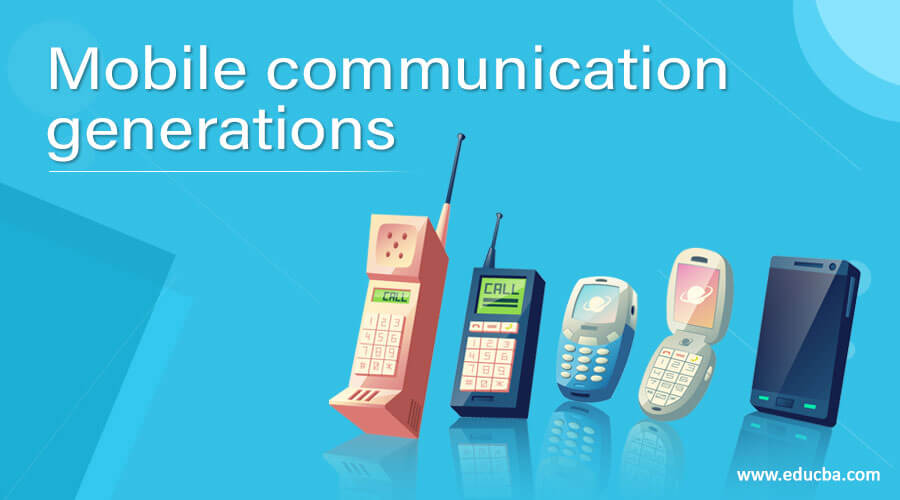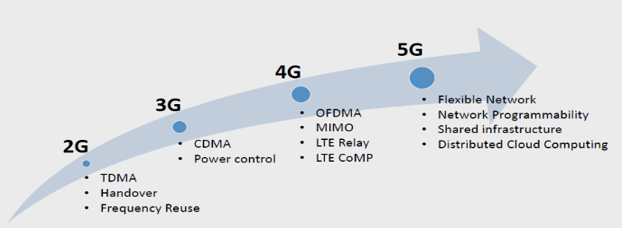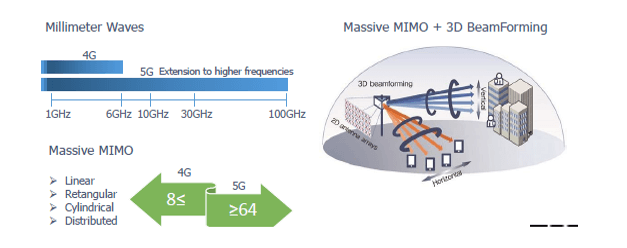Updated April 3, 2023
Introduction to Mobile communication generations
Any recent changes in the mobile telephone communication setup have been termed as generations. The changes in mobile Telephony that includes the systems, functions, characteristics, and interconnections required to create an electronic network that allows a telecommunications network operator to provide services are called the mobile communication generations. In a mobile communications system, data transmission and reception, information routing and data management are aspects of mobile telephony.
Mobile communication Generations
The first-ever consumer mobile phone which has been released for commercial purposes has been launched in 1983. Since then mobile technology has seen a lot of changes and improvements in its features. Most of this progress can be attributed to improved engineering. This technology has been proven to be stable, accurate, cheap to manufacture, and easy to maintain.
There have been comprehensive changes on both the economic side of the changes in mobile telephony services as well as the changes in broadband access services, including the impact on competition in broadband markets.
Let us discuss in detail the different generations that have been released and used for commercial purposes.
First Generation (1G) Technology
In this generation of technology, mobile communication is done only through an analog signal that has been used to transmit the user data. The wireless industry has gone through a phase of digitization in which many of the devices that users today use with a wired PC connect to the Internet. 1G technology was primarily used and designed for voice communication purposes. The US Army began using VoIP (Voice over IP) technology in the late 1980s to create a new way of communication for soldiers in wartime, and this first generation of VOIP systems could be considered a breakthrough in the field of communications. However, these systems were not practical as many voice calls were not available, including government communications. It is an analog voice communication system consisting of two microphones, an amplifier, and a signal generator/modulator, called Voice Over Internet Protocol. This method of data transmission enables communication with any other device by using only the telephone line. When the user connects his device via the telephone, he will be connected to the other person over the telephone line. That connection provides both parties with the same information. So, the receiver and transmitter share the information.
Second Generation (2G) Technology
The first time the digital signal was used in mobile telephony to transmit signals was in the second generation era of mobile communication. Mobile phones in this generation were capable of transmitting audio and video. The technology was used in more than 60 countries and is already well established in North America and Europe. 2G in a way revolutionized the mobile communication industry although the network speed is limited to 64kbps lots of digital information was being shared.
GPRS technology was introduced it became very useful in transmitting more data through email and other web services that use slightly more network speed. The text message SMS feature in 2G technology was widely used and extremely popular at that time and it allowed many users to occupy a frequency band which made it more efficient.
Third Generation (3G) Technology
In this technology true revolution took place where the network speed was increased up to 2Mpbs which made high-speed browsing, gaming, email, and other web services possible to a vast segment of the population. 3G technology has made a scenario where new mobile phones are developed and sold with major advertising capabilities. This makes the users a core demographic and is very important for the mobile service provider. Since all the existing mobile networks now have to run the latest operating systems and hardware, the number of mobile phones has increased from about 600 million in 1998 to nearly 10 billion today. This huge number of mobile phones is changing the face of telecommunications. Today, the mobile operator only has to sell one million smartphones in a year or one percent of the total sales in the mobile industry. This created some downside to the technology where the infrastructure setup for mobile towers and services became high and mobile phones became costly where a most segment of the population couldn’t afford to buy.
Fourth Generation (4G) Technology
After the 3G transition, the next evolution took place with the introduction of mobile broadband and mobile data in the year 2011 where 4G was introduced. 4G was one step higher than the 3G which was considered a revolution. With 4G, carriers can create a “super high speed” network so that even at 2G speeds it’ll be able to deliver fast, reliable downloads in just 30 seconds. The network speed in 4G has been increased up to 100Mpbs. This technology made possible some of the things such as high-speed gaming, High-definition Mobile Television, Digital Streaming, HD Television services, Cloud computing, etc. 4G offers faster data speeds at lower prices, in areas that are underserved by its competitors, and offers a wider variety of cellular networks. The development of Smartphones became very popular after the launching of 4G where all the devices manufactured post-2013 supported the 4G feature which made 4G technology reach a wider audience. The 4G technology is being increasingly rolled out in 3G and 3G-LTE networks. As the technology matures, the number of devices and applications to support 4G growth will increase dramatically, from roughly 100 million devices today to over 1.5 billion devices in 2020.
4G offers a lot of capabilities features to the users such as Advanced user capabilities like multitasking, rich content browsing, and instant calling. A new type of multimedia access with Wi-Fi. A new way to upload photos and videos directly from their memory. Ability to share and view online content with friends. Ability to transfer content from the mobile device and use it on the go, etc.
Fifth Generation (5G) Technology
The wireless evolution of 5G is solving the problem of resource allocation by means of cooperation and coordination. Basically, 5G is the standard of wireless cellular technology, which was developed by 3GPP. The 5G is following footsteps of the 3G and 4G technologies. 5G network is based on the standards which was connecting wireless routers, smartphones, and other communication devices. 5G is delivering a good improvement in latency, transmission speed, and flexible deployment. 5G delivers additional capabilities as compared to the 4G wireless network. The below figure shows how revolution is done from 2G to 5G network.
5G supports multiple technologies. Aiming to meet the needs of upcoming applications, the ambitious specification implies a significant improvement in performance over 4G. Throughputs of 5G is 10Gbps which was 100 times faster than 4G. In the below example, we can see the network distribution of 5G as compared to 4G.
A full 5G network is required to implement a new one. Investment of operators and considering the elapsed time will enable full rollout. 5G revolution is allowing 5G services to be provided by the existing infrastructure of LTE. In the 5G revolution, we expect a major transformation in existing business models and economy, specifically in the vertical sector. 5G contains customization and a scalable network. As compared to 4G, it will contain a high KPI. 5G network contains the advanced KPIs in reliability, area traffic capacity, latency, and in availability.
Conclusion
We have discussed in detail the Mobile communication generations in general and the different generations that have been launched for commercial purposes. From the 1st Generation to the lastest 4th Generation the Mobile Telephony has seen a lot of remarkable growth in the features and services it offers to the users. The world we see today is possible only through these revolutionary changes in mobile communication technology.
Recommended Articles
This is a guide to Mobile communication generations. Here we discuss the Mobile communication generations in general and the different generations. You may also have a look at the following articles to learn more –






